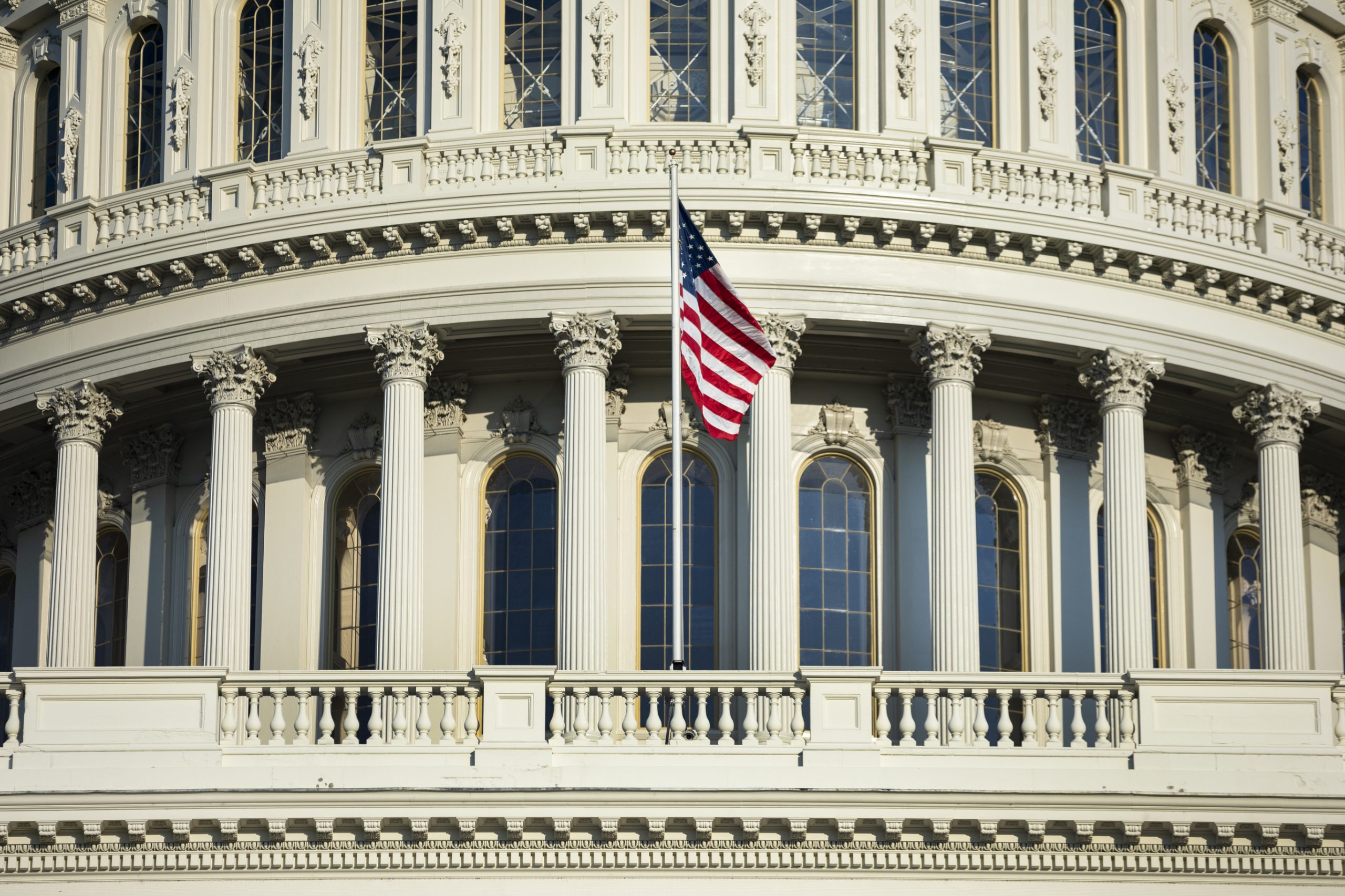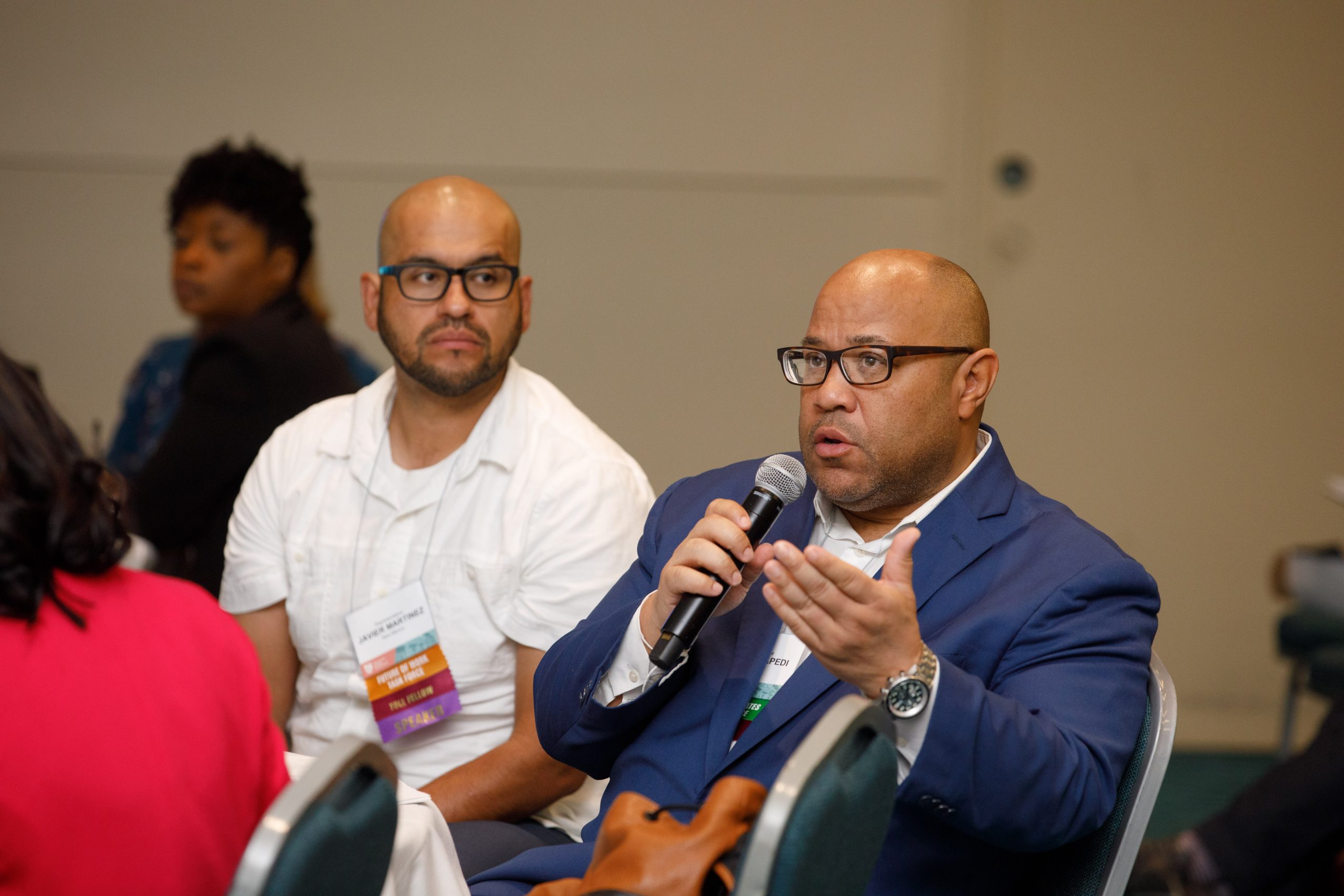How will the switch to EVs impact the states?
Continue readingStatement by David Adkins, Executive Director and CEO of The Council of State Governments on the Observance of the Twentieth Anniversary of the Terror Attacks of Sept. 11, 2001
Sept. 11, 2001, dawned as a beautiful day with the kind of clear sky aviators describe as “severe clear.” Beginning at 8:46 a.m. Eastern Daylight Time that blue sky would darken as the first plumes of smoke began rising from what would become the worst terrorist incident in U.S. history.
When the two iconic towers of the World Trade Center fell that morning, over 2,600 people from 90 countries perished. The Council of State Governments office, located in a nearby World Trade Center building, would also be destroyed. Thankfully, no CSG employees perished or were physically injured in the attacks. The New York City offices of The Council of State Governments would be relocated many times in the years following the attacks, but our resolve to stay in the financial district of New York City remained steadfast.
Twenty years hence, The Council of State Governments remembers that dark day. We remember the lives lost in New York City, at the Pentagon in Washington, D.C., and the 40 brave passengers and crew members who perished aboard United Flight 93 when it was brought down in Shanksville, Pennsylvania.
We also remember the unforgettable personal experiences of the men and women who found themselves caught at the center of an unprecedented human event. And we commemorate the spirit of all those who came together across the globe in the wake of the attacks to serve others.
We honor the memory of the 344 firefighters and 71 law enforcement officers and other helpers who gave the last full measure of devotion on that day. We remember the more than 3,000 children who lost a parent in the attacks. We remember the 55 members of the armed services who were killed at the Pentagon that day. We reflect on the incredible bravery of the passengers of Flight 93 who, surely knowing their lives would be lost, chose to overtake the hijackers and, in doing so, likely prevented their plane from being flown into the seat of our nation’s government, the United States Capitol. In all, nearly 3,000 people would die as the innocent victims of this unspeakable violence.
On 9/11 many sacrificed, and many served and many were called to serve. From the ashes of the attacks, the stories of countless every day Americans performing extraordinary acts of service emerged. The nation came together, united in compassion and resolve. It is this part of the legacy of 9/11 that continues to call all of us to honor our obligations as citizens and to give selflessly of ourselves in service to others.
The CSG New York office is now located just a block from Ground Zero. I have taken the short walk to the National September 11 Memorial many times during my visits to our office. Each time, I reflect on the magnitude of loss and think of all those who continue to face health challenges because of the events of that day.
Our states and nation face considerable challenges. On this twentieth anniversary commemoration of the attacks of 9/11, we, as citizens, can honor the victims of 9/11 and further their legacy by rededicating ourselves to serve the common good, by condemning hate in all its forms, by reaching out to our neighbors in need, by honoring those who serve in harm’s way in our stead and by comforting those who have suffered loss. We have the power to confront those who wish our nation harm by doing all in our power to preserve, protect and defend democracy and the rule of law.
Two decades later, the enormity of the events of 9/11 still defy comprehension, but this much is clear, in the wake of one of the most horrific events in our nation’s history, countless, vivid examples of the best of America emerged. I recall seeing the words, “United We Stand,” proudly displayed throughout the U.S. in the weeks and months following the attacks. As we remember 9/11, let us now each pledge to do our share of the hard work necessary to unify our country, knowing that when Americans come together as one nation, nothing can stop us.
May God bless the memory of those who perished because of the events of 9/11 and may God bless The United States of America.
David Adkins
Paralympian and Legislator Will Watch, Attend Paralympic Games

While the whole world will be watching the Olympics beginning on July 23, one state legislator has a particular interest in the Olympic and Paralympic games.
“I never miss an Olympic game when they are on,” said Idaho state Rep. Muffy Davis. “I am glued to it. I love watching athletes strive to be their best and the stories they tell.”
Davis, who will be traveling to Tokyo as a member of the United States Olympic and Paralympic Committee board of directors, a position she was appointed to after years of competing and medaling in the Paralympic Games.
Davis won a bronze medal in Slalom in the 1998 Olympics in Japan and in 2002, she won three silver medals in the downhill, super-G and giant Slalom events. In 2012, she won three gold medals in handcycling events in the London Paralympic Games.
She had been a top prospect for Olympian skiing before she had a skiing accident in 1989 that left her paralyzed. Davis had to take time to re-learn how to ski and learn other sports to accommodate her disability. The Council of State Governments profiled her as part of our 2020 special issue of Capitol Ideas Magzine, “30 Years of the American With Disabilities Act.”
“The hardest part of my accident and becoming disabled was thinking my lifelong dream and goal was over — that I wouldn’t be able to accomplish it,” said Davis, who was injured at 25. Soon, however, she learned about Paralympics movement, which gave her dream new life.
‘My injury level was quite high,” Davis said. “In my mind, I was a ski racer, so I was going to jump on a Monoski and be great right away. That didn’t work quite that way. It was very hard. It took a long time. Being tenacious or stubborn, I didn’t quit or give up, and I knew that it was possible. For me, I had to mentally and emotionally think of it as a new sport because it was so painful to try and think of it as skiing, as I had.”
Davis credits her family and coaches for their support and help in connecting her with the right resources to learn how to ski differently and try other sports.
Davis became a member of the Idaho House of Representatives in 2018 and is passionate about the issues of education and healthcare.
As a member of the United States Olympic and Paralympic Committee board of directors, Davis will travel to watch some of the Paralympic Games before coming back for some legislative duties.
“We just finished […] the U.S. Paracycling National Championships, and they were hosted here in Boise, Idaho,” she said. “It was so cool to come and hand out medals. Some of our female hand cyclists are some of the top in the world. It would be my dream to hand out a Paralympic medal to some of our U.S. athletes who I helped mentor. It is an honor to give it to any athlete, but it’s so fun to give it one of our own countrymen or women.”
Biden reaches deal on infrastructure with bipartisan senators
President Joe Biden announced Thursday, June 24, that after meeting with a group of senators from both parties, they had reached an agreement on infrastructure.
This comes after weeks of negotiations surrounding the president’s original $2 trillion American Jobs Plan Act, which focuses on infrastructure investments in traditional things like roads, bridges and railways, but also places a new focus on broadband internet and water systems. The compromise would fund roughly $1.2 trillion in infrastructure investments.
What’s in the package
The bi-partisan version of the package amounts to $1.2 trillion in funding over eight years, with nearly $600 billion in new spending. The package includes $312 billion for transportation and $266 billion for other infrastructure.
According to the White House, the new spending includes:
Transportation – $312 billion
- $109 billion for roads and bridges
- $11 billion for safety
- $66 billion for rail
- $49 billion for public transit
- $7.5 billion for electric vehicles
- $7.5 billion for electric buses/transit
- $1 billion for reconnecting communities
- $25 billion for airports
- $16 billion for ports and waterways
- $20 billion for infrastructure financing
Other infrastructure – $266 billion
- $55 billion for water
- $65 billion for broadband
- $21 billion for environmental remediation
- $73 billion for power and grid authority
- $5 billion for western water storage
- $47 billion for resilience projects to cope with climate change
Goals of the infrastructure plan
The White House said the plan, known as “The Bipartisan Infrastructure Framework” would:
- Improve healthy, sustainable transportation options for millions of Americans by modernizing and expanding transit and rail networks across the country, while reducing greenhouse gas emissions.
- Repair and rebuild roads and bridges with a focus on climate change mitigation, resilience, equity and safety for all users, including cyclists and pedestrians.
- Build a national network of electric vehicle chargers along highways and in rural and disadvantaged communities.
- Electrify thousands of school and transit buses across the country to reduce harmful emissions and drive domestic manufacturing of zero emission vehicles and components.
- Eliminate the nation’s lead service lines and pipes, delivering clean drinking water to up to 10 million American families and more than 400,000 schools and child care facilities that currently don’t have it, including in tribal nations and disadvantaged communities.
- Connect every American to reliable high-speed internet.
- Upgrade the power infrastructure, including by building thousands of miles of new, resilient transmission lines to facilitate the expansion of renewable energy, including through a new grid authority.
- Create a first-of-its-kind Infrastructure Financing Authority that will leverage billions of dollars into clean transportation and clean energy.
- Make the largest investment in addressing legacy pollution in American history.
- Prepare more infrastructure for impacts of climate change, cyberattacks and extreme weather events.
How the package will be funded
No new taxes will be leveraged to fund this package. Instead, the White House stated that proposed financing sources will include a variety of alternative revenue strategies, including reducing the IRS tax gap, redirecting unused unemployment insurance relief funds, repurposing unused relief funds from 2020 emergency relief legislation, state and local investment in broadband infrastructure, and allowing states to sell or purchased unused toll credits for infrastructure.
For additional resources related to the American Rescue plan, visit web.csg.org/recovery.
CSG Announces National Task Force Findings
CSG National Task Forces release two-year findings and state policy recommendations
Two CSG member-driven national task forces release recommendations and innovative public policy solutions paired with state examples and opportunities for state elected and appointed officials to use as they work to improve health and workforce outcomes across their communities.





